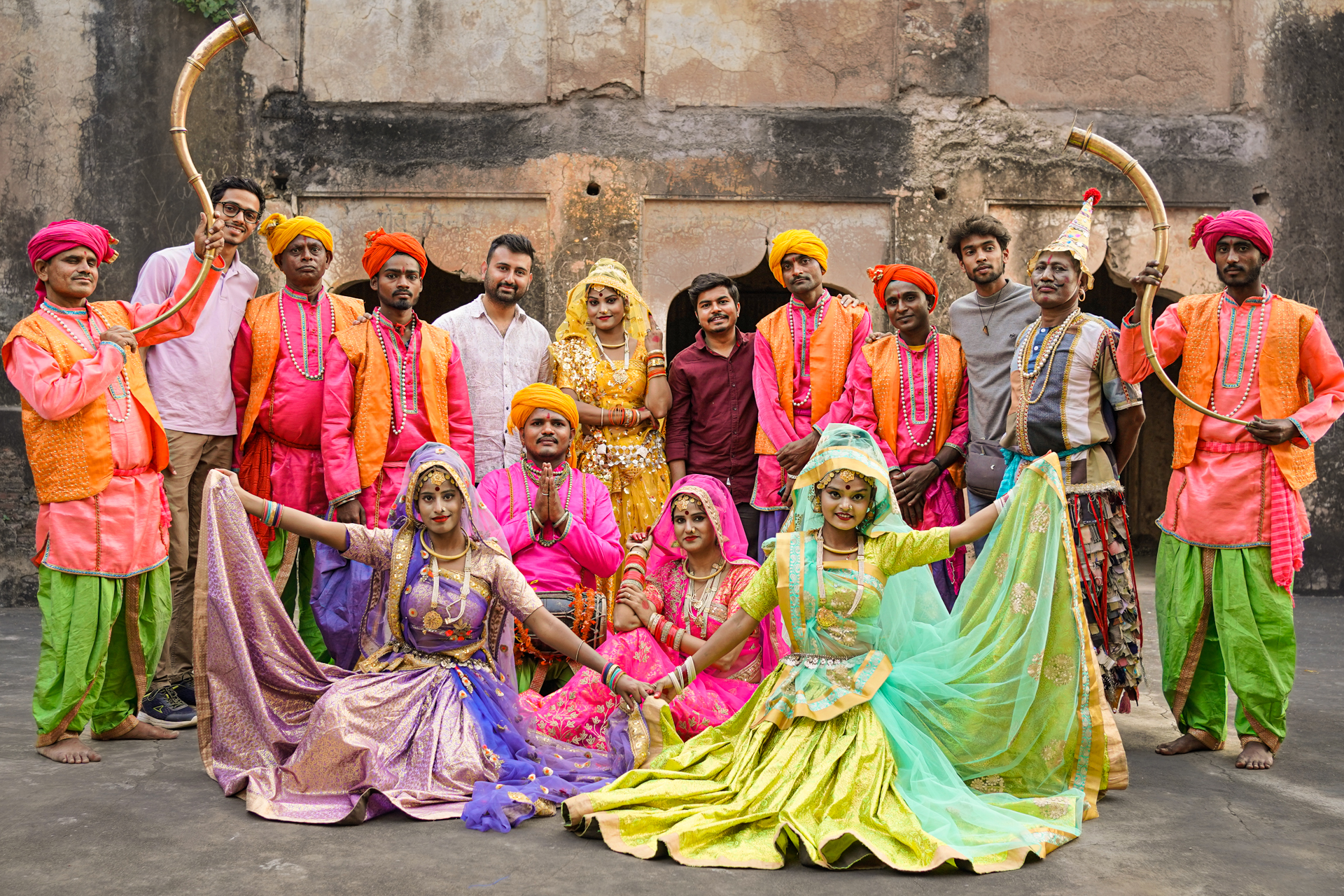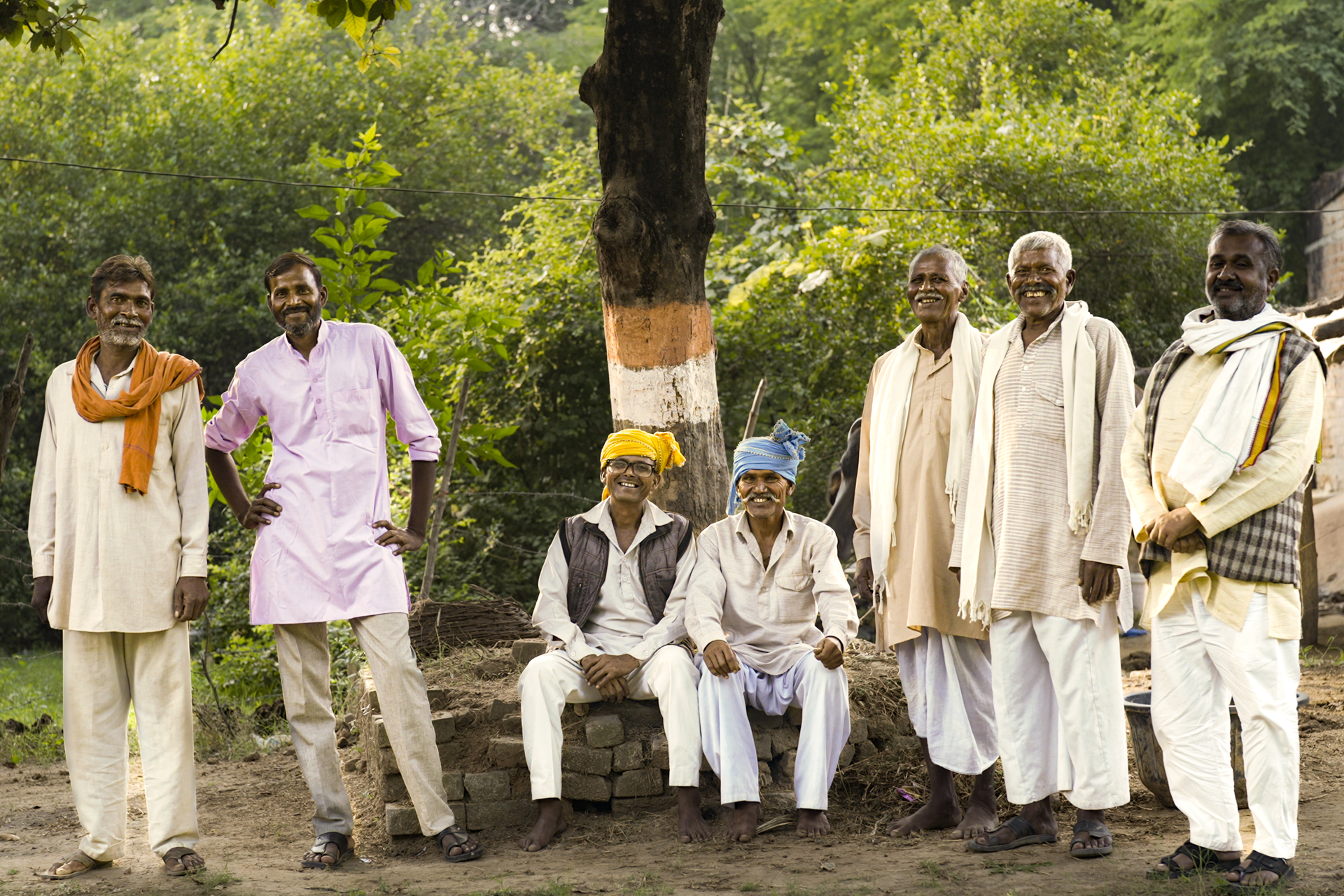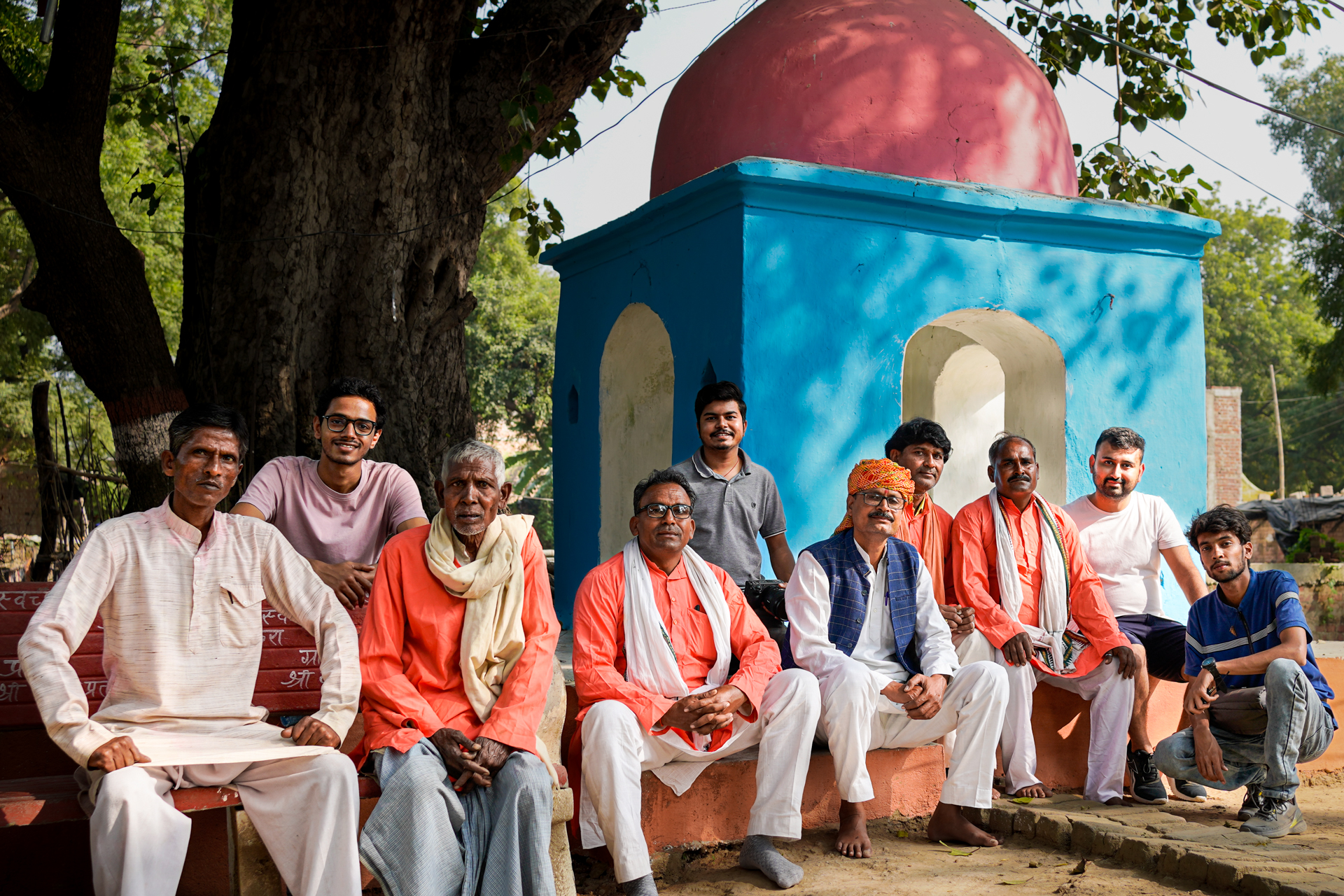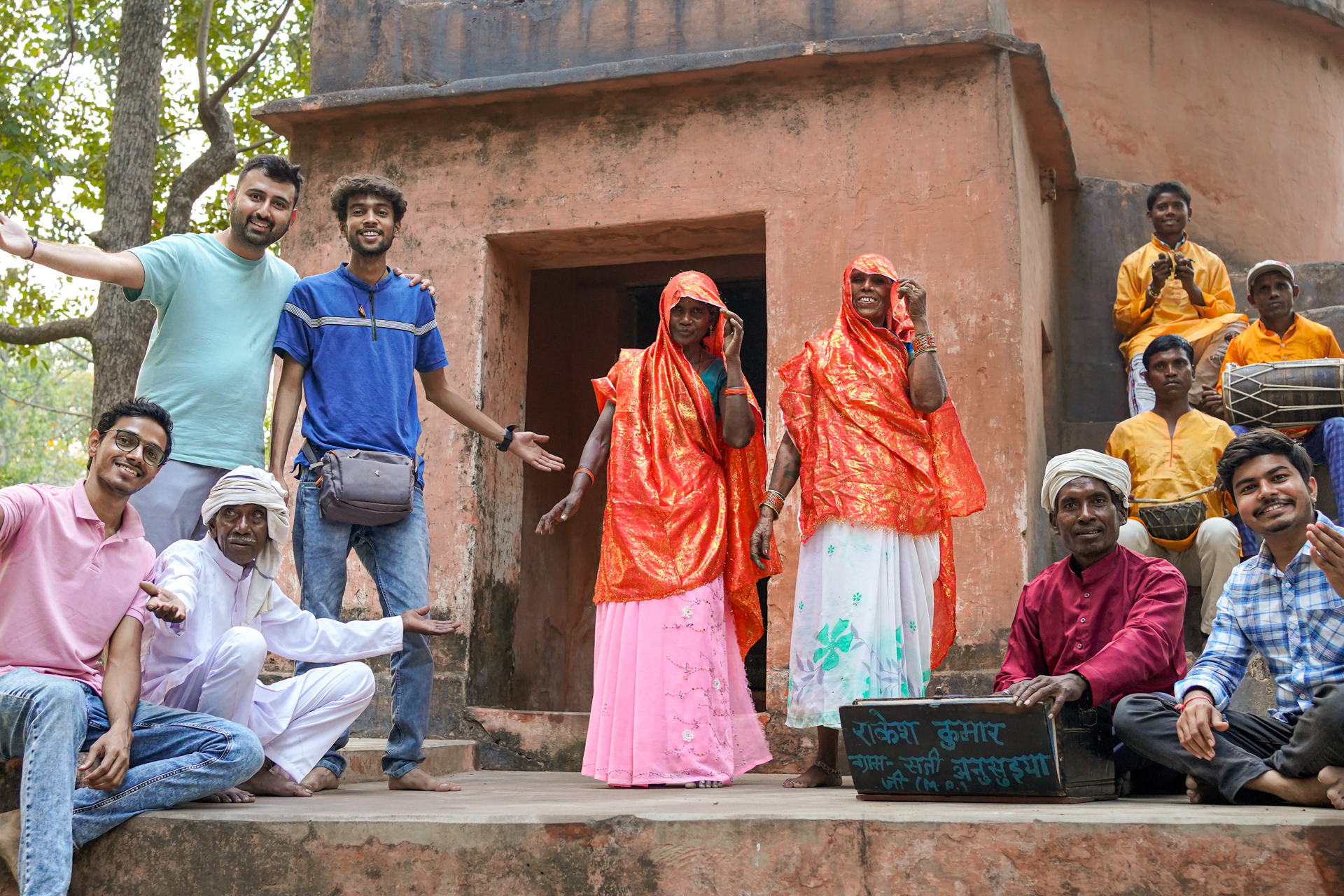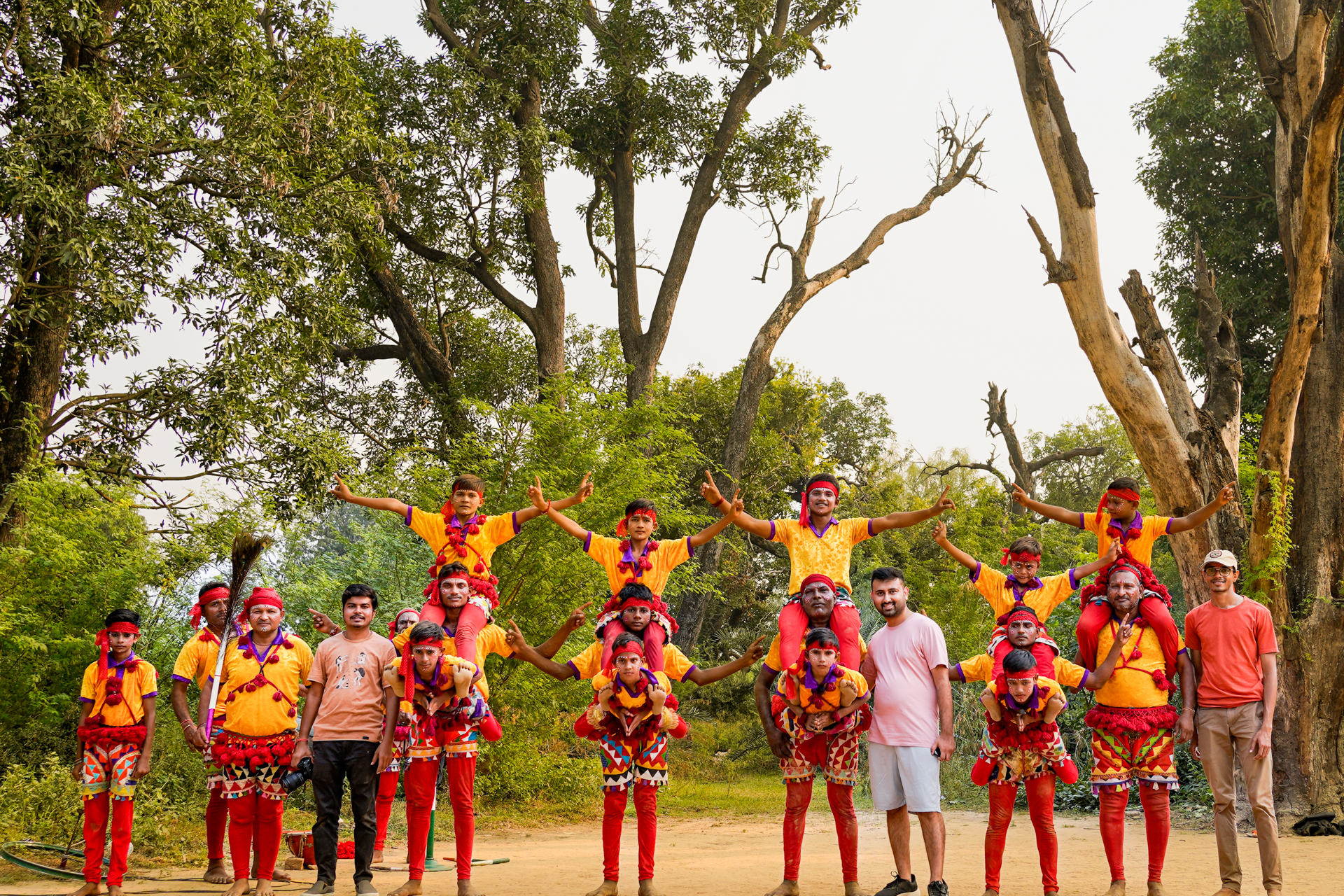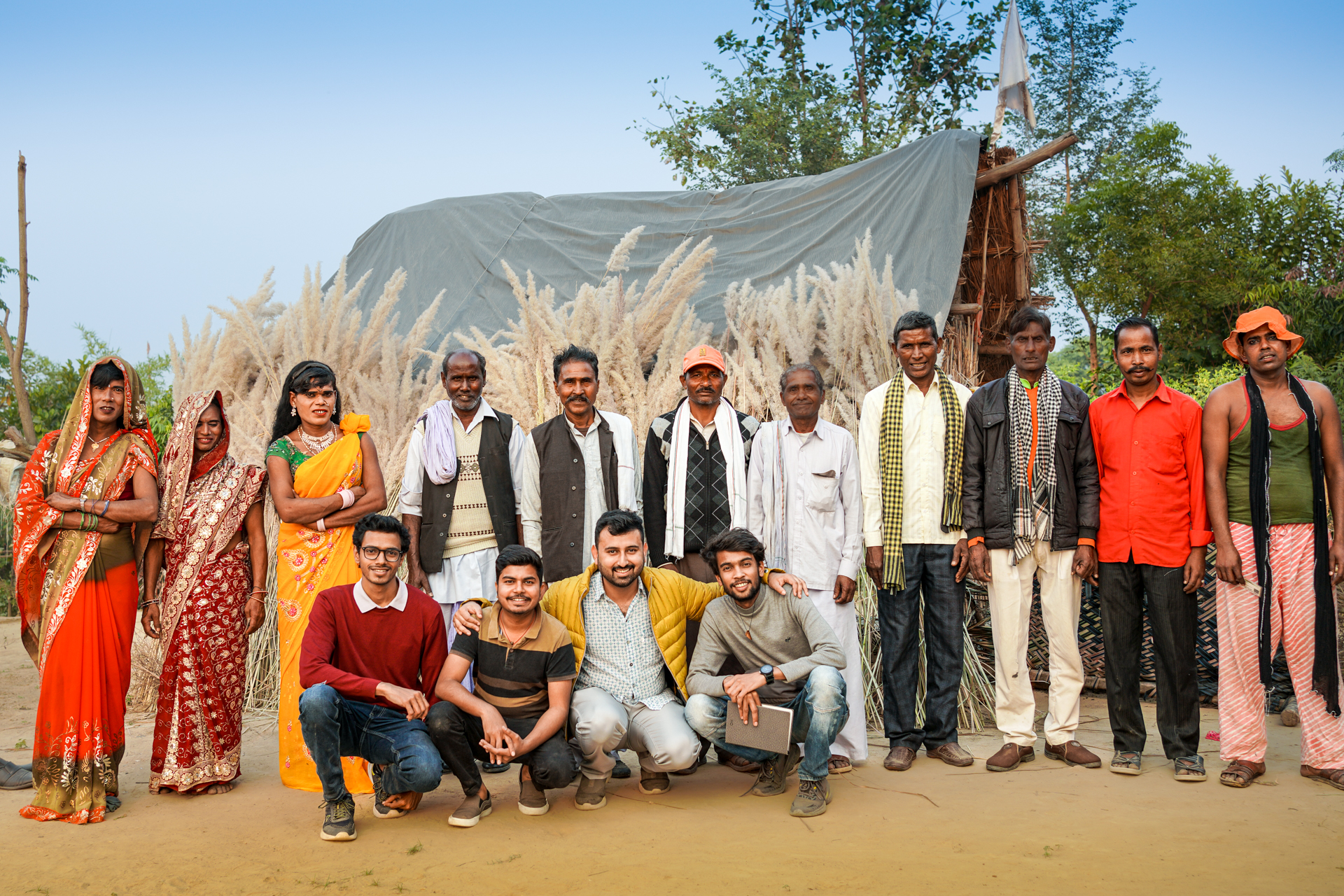
The twelve colours of the twelve months of the year – Barah Maasi
The scenic backdrop of the Gangetic plain and the colourful lives of the people there are at the centre of this unique folk form of Uttar Pradesh.
Uttar Pradesh is located on the very fertile Gangetic plain, and the scenery is filled with lush farmlands, streams and rivers, and the region experiences hot summers and cold, foggy winters. This beautiful scenery forms the backdrop for a folk genre called Barahmasi. Barahmasi literally translates to “twelve months”, and the songs describe the happenings in each month of the year. At the centre of this song is a woman who is longing for her lover’s return. As she describes the events of each month, she yearns to share them with her lover but is sad that the lover is not present with her.
Barahmasi is native to the Awadh region of Uttar Pradesh, where Awadhi is spoken as the native language. Although mutually intelligible with Hindi, the Awadhi language has a rich literary history, dating back to Tulsidas’ Ramcharitmanas. The Barahmasi songs are written in Awadhi, or Awadhi-influenced dialect of Hindi, which adds to the charm of these songs.
Barahmasi is also notable for its use of Huduk and Chikara, two folk instruments that are native to North India. Huduk is a small two-headed drum that is used to produce sounds of varying pitch and creates a very catchy, energetic rhythm. On the other hand, Chikara is a bowed instrument similar to Sarangi. It usually has only one string and is held upside down like a cello. Due to its energetic rhythm and music, Barahmasi is performed in nautanki style, with chorus singers also dancing to the song.
Rural Uttar Pradesh is still a conservative society; there, the women rarely dance in public. The female parts in such nautanki-style dances are played by men dressed as women. These men are known as Lavanda, and their dance is very popular and well-liked by the villagers. Barahmasi is also similarly performed by these Lavanda dancers, who sing in chorus and dance to the songs.
Based in Katgara, a village in the Hardoi district of Uttar Pradesh, 55-year-old Shrikrishna is a veteran singer of Barahmasi, who has been singing it for over 38 years. He learnt to play the Chikara from his teacher, Laltu, for many years. The instrument is rare and now not used a lot because it is so difficult to learn and master. Shrikrishna said that his district, Hardoi, and the neighbouring Sitapur district, are the last pockets remaining where Barahmasi is still performed with Chikara, for otherwise, everybody has shifted to modern instruments like piano and banjo.
Bade dil ke kathor, bade mann ke kathor, ab tak shyaam na aaye. This Barahmasi song explores Radha’s state of mind when her lover, Krishna, goes to his uncle’s house in Kubri and hasn’t returned even after many months. For each month, Radha sings, remembering Krishna and describing the happenings in Gokul in Krishna’s absence. For instance, speaking of the month of Diwali, she sings, Karthik maas ka mahina re, chali Ganga nahayi, humre shyaam ghar na aai. Kahin pherat jaaun, humre kanhiayya na aayi. This kind of Barahmasi is based on the story of the Puranas and other mythological epics.
The second kind of Barahmasi that Shrikrishna sings is based on a village woman’s loneliness and longing for her lover when he’s away at work. The picture of the lonely, longing woman is pertinent across many folk forms in Eastern Uttar Pradesh, as the region has always witnessed large-scale migration to cities. As the men were away in cities, women had to be in charge of the households and farms, and they developed these songs as a means to cope with the new responsibilities they had to take up. Aur piya binauthi, birha ki peer, taras me rahyu na. Even in this kind of song, the woman sings in each month of the year, remembering her husband and her growing loneliness. Ashad lage saawan, lage piya pardesi, ya man khafa kya bhawan, chale gaye chhod ke daman. Toh daman si lagi kaaman, kare solah sringaar, sab sakhi mil jhoolwai kare teej tyohaar.
Other than the dancers, Shrikrishan’s group also includes a joker who entertains the audience with his antics. Shrikrishna explains that just plain singing and dancing often get boring. As they often have to entertain audiences all night at weddings and other events, the joker helps in keeping the audience engaged with jokes and funny anecdotes delivered in the local dialect. During the song, the joker and the other dancers also perform slapstick moves to amuse the audience and lighten the heavy, grieving mood of the song.
Shrikrishna reflects that the life of a folk musician is very difficult. The performances are very physically straining because they have to perform mostly all night at events and gatherings, and they have to maintain the energy and keep the audience engaged. Even learning instruments such as the chikara is so tough. The only thing that has kept him going all these years is his passion and yearning to sing. Otherwise, he doesn’t earn a lot from it. He has even, sadly, discouraged his children from learning music and refused to teach them. He doesn’t want them to suffer as he did. He is also a farmer, and his children assist him in farming and also work as labourers.
The dancers seem to fare better, though, because they claim to be dancing only for the money. As the Lavanda dance is so popular in this region, the dancers receive a good amount for performing in the form of tips. They are all running their households from their income as dancers.
Barahmasi is a colourful and lively folk song that continues to be popular because of its simple and catchy beats, and it so easily adapts to many different situations. The primary aim is to celebrate joy and happiness and celebrate the experience of witnessing the many happenings of the year – from different seasons to the many festivals and celebrations.


